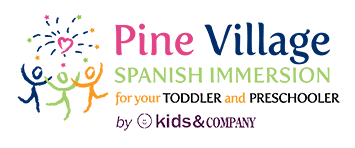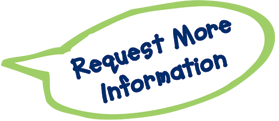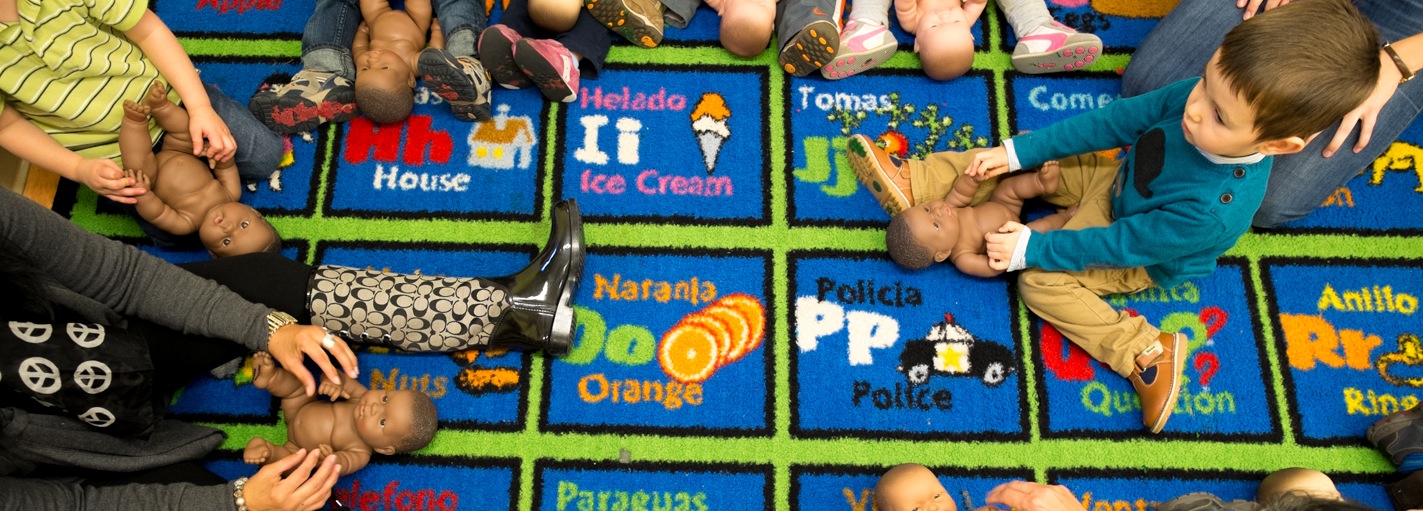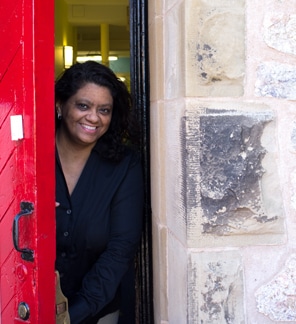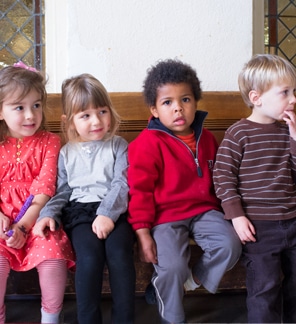Spanish is the vehicle for content instruction at Pine Village; it is not the subject of instruction.
Immersion is defined as a method of foreign language instruction in which the regular preschool curriculum is taught through the medium of the second language, Spanish. Pine Village is a full immersion language school, meaning educators speak in Spanish 100% of the day, every day – with the understanding that we nurture and support children, if needed, in their native language (English).
We present our language program in the same way we present instruction in all curriculum areas. Children incorporate new information into their lives as they are able to process it and comprehend it. The children’s ability to accept and understand Spanish comes as they progress through our program month after month.
Techniques
In their early years children naturally process language without the inhibitions and fears that most adults have learning a second language. Initially at Pine Village the exposure to spontaneous language, words and phrases that are repeated throughout the day allows for a gradual, natural comprehension. Songs, books, words in print around the room, and daily routines all incorporate the immersive approach as we naturally blend Spanish into everyday routines. As the children become progressively more familiar and comfortable hearing and understanding the second language, their response in Spanish becomes a natural part of their thought process and the second language emerges.
Typically second language comprehension occurs within weeks of enrolling and beginning a Pine Village experience. Pine Village teachers use a very animated approach, hoping to communicate not just verbally, but with great physical expression, hand signals, body language and at times even the help of another child, to demonstrate what is being communicated. This allows Pine Village teachers to avoid using verbal English translation in the classroom, thus promoting faster comprehension and use of a second language.
Teachers gently encourage the children to speak in Spanish during the day. While we do not want to create stress for children by forcing them to respond in Spanish, we do want to encourage them. Our teachers look for creative ways to elicit a response or conversation in Spanish and incorporate various techniques to encourage the children’s response in Spanish during the school day. Teachers will praise children for spontaneous responses in Spanish; they may start a campaign to fill a pom-pom jar to earn a pizza party for more Spanish responses, they may even pretend not to understand English.
Rates of Acquisition
Language acquisition for children happens in stages: first understanding, then one-word utterances, then two-word phrases, and so on. Students learning a second language move through similar stages: Preproduction, Early Production, Speech Emergence, Intermediate Fluency, and Advanced Fluency (Krashen & Terrell, 1983). The rate of acquisition for each child can vary and depends largely on the number of days a child attends Pine Village, as well as the child’s age when they start. In addition, if there is the added support of some amount of Spanish in their home environment, acquisition and fluency rates are much higher.
Generally speaking, for children who begin at Pine Village as toddlers when, developmentally speaking, language skills are emerging, the introduction of a second language is seamless and allows for a much higher rate of acquisition and fluency. As children age and their vocabulary base in their first language is established around age 3-4 years, the rate of acquisition of a second language can be slower as we are adding to a vocabulary base as opposed to creating one.
Our full immersion approach offers the best results for second language learning for children of any age. Second language learning rates typically match first language rates and processes. In their first six months of immersion, children have limited comprehension and low verbalization. Within six months to a year children are increasing comprehension, growing a vocabulary base and producing one- to two-word phrases using present tense verbs. As they move into their second year at Pine Village, children have excellent comprehension, produce simple sentences and feel very comfortable navigating within the full immersion environment. In years two and three, children have excellent comprehension, respond frequently in Spanish to the teachers and often use Spanish in their natural and spontaneous play and interactions with each other.
The Benefits of Bilingualism
Learning a new language at any age is an enormously rewarding experience in many ways. While language learning is an enriching experience for all ages, children have the most to gain from this wonderful adventure. Quite simply, starting early offers the widest possible set of benefits and opportunities. Children understand intuitively that language is something to explore, to play around with, and to enjoy. Their enthusiasm is both infectious and effective. The quickness with which they pick up their first language is nearly miraculous—and such a joy to watch as a parent.
As children grow, all parents can attest to how much fun their children continue to have as they sing new words they hear and even invent new ones with a huge, bright smile. The joy with which children explore their first language makes childhood the ideal time for a second language—even if all the other reasons for an early start didn’t exist! But there are many other reasons, and while this list does not exhaust the number and variety of advantages starting a language early can provide, these are some of the most notable benefits:
- Higher test scores
- Better and more advanced reading skills
- Greater confidence
- Gives brains a boost
- Natural-sounding, native-like accent
- Greater opportunities for college and careers
- Bigger view of the world
- Greater grasp of one’s first language—including a bigger, richer vocabulary
- Building and keeping cultural connections
- An all-family activity
Source: www.Early-Advantage.com/articles
